In my first NPD blog, I talked about “How to handle intake for your NPD projects.” New Product Development (NPD) brings new blood into companies by providing the basis for new ideas and new sources of revenue. This should be important to all companies as this is how companies grow and stay in operation. Knowing how to analyze your active projects is very important. Some companies try to gather status and analyze their active NPD projects an Excel spreadsheet and email. Doing so could put your company at risk. My goal is to show you the advantages of gathering information from your active projects and analyzing them with a Project Portfolio Management (PPM) solution throughout the project lifecycle.
Your PPM solution should allow you to view your proposed projects in line with active projects to evaluate the fit for your organization throughout the project lifecycle. Project status is another benefit of a good PPM solution. I have worked with PMs throughout the world and I have talked to some PMs who spend a large percentage of their week gathering status information, preparing presentation materials and reports, and presenting the status information to their stakeholders and Governance. Your PPM solution should automatically pull key information from native and custom fields, issues, risks, and schedule activities to create an automated status report. Below is an example of an automated Status Report providing a huge gain to the project team and a quick payback on your PPM solution investment with all the time given back to the project team.
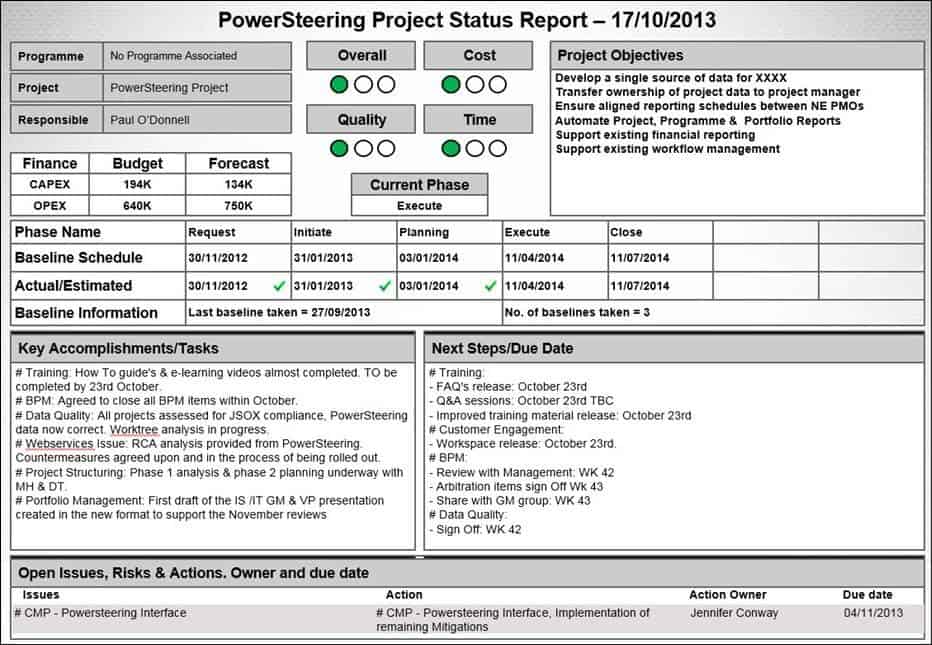
During the rest of the project lifecycle, status information can be used to provide drillable dashboards to provide portfolio analysis and real-time information for decision making.
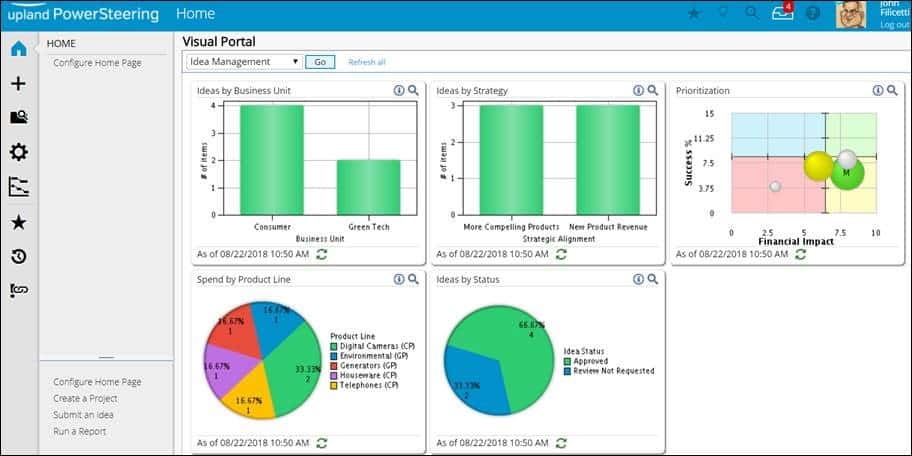
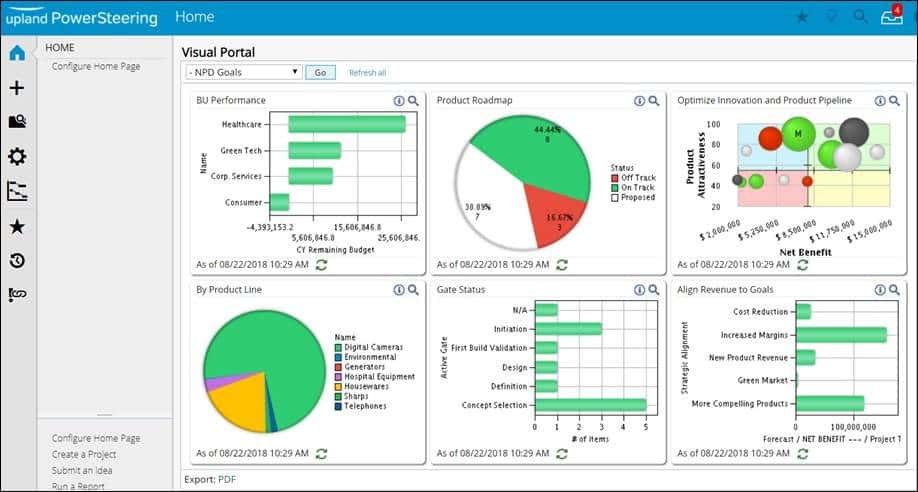
In order to stay competitive in the product development marketplace, leaders need to make trade-offs, accelerating some projects and delaying or suspending others. These decisions require the right information at the right time, some soul searching, and the ability to do portfolio analysis. They may ask questions such as
- What is the best use of our existing and future financial and operational capacities?
- Which projects will create the most value for our company and its stakeholders?
- Which projects are performing best?
- Which projects should be discontinued because development has taken too long or the market has changed?
Providing the means to answer those questions more rationally is precisely the objective of a good PPM solution. Another thing a good PPM solution can help with is looking into the future. As you are analyzing current metrics, you can also gather information to make decisions for the future.
No company has the resources to meet all its business needs. This is true in the best of times and is certainly truer when times are tough. Having the view of your resources across your project portfolio and being able to prioritize where to apply those limited resources is a key aspect of a PPM solution. You will be able to plan for the resource roles needed for proposed projects and hire, train, or find suitable contract labor to meet those needs.
The corporation will have the ability to see where the resources are being applied and apply a prioritization and approval process to ensure the right projects will have the right resources to provide the most value. You will want to use your PPM solution to provide analysis capability to your leadership using drillable dashboards. The dashboards should provide the capability to drill in from the enterprise to the role and project to re-allocate or make better decisions.
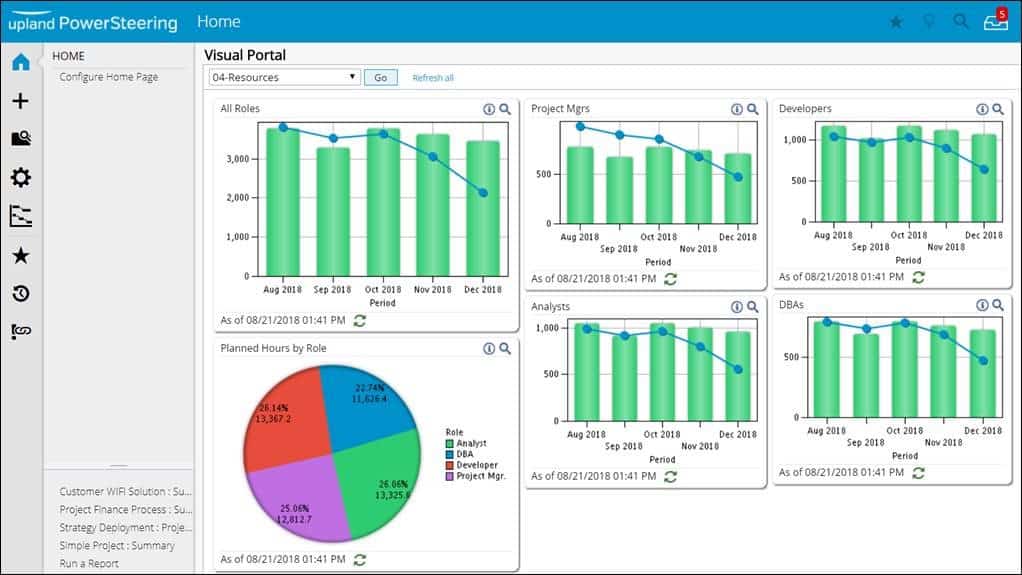
To ensure you have the right resources available when needed, you will need to look at upcoming projects for your future technology needs. Your PPM solution should provide the ability to look at your current allocation of resources by role and your future needs to be sure you are hiring the right people or developing your current resources. A good example of this view is below.
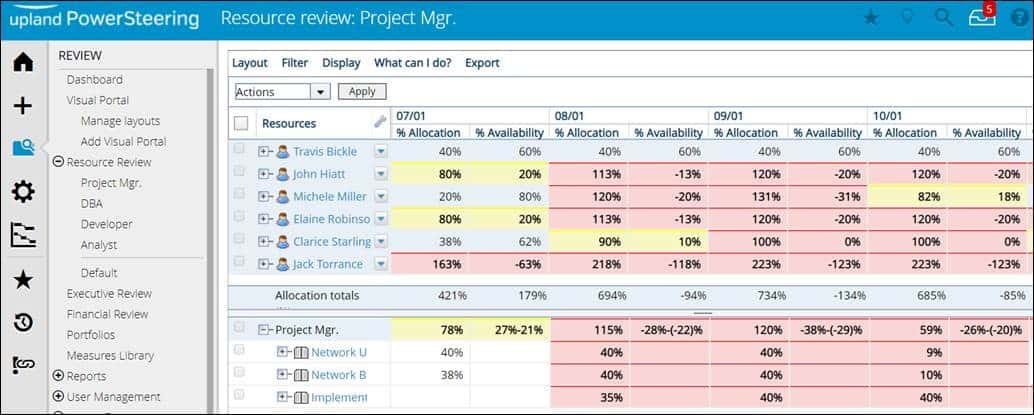
Current needs are in the upper half and future demand by role is in the lower half.
Other things to consider for NPD projects is the technology base you have available for development projects. Is the current in technology base you have house to support new product development adequate to support development or will you need to acquire and deploy new technology? Being able to gather information from your project portfolio, analyze the information, and use your analytics for decision making is one of the greatest benefits you can gain from a PPM solution.
View our NPD Demo to learn how to gather information and analyze your active projects to accelerate the delivery and improve the quality of your product launch initiatives.
